Your cart is currently empty!
Tag: Outcomes
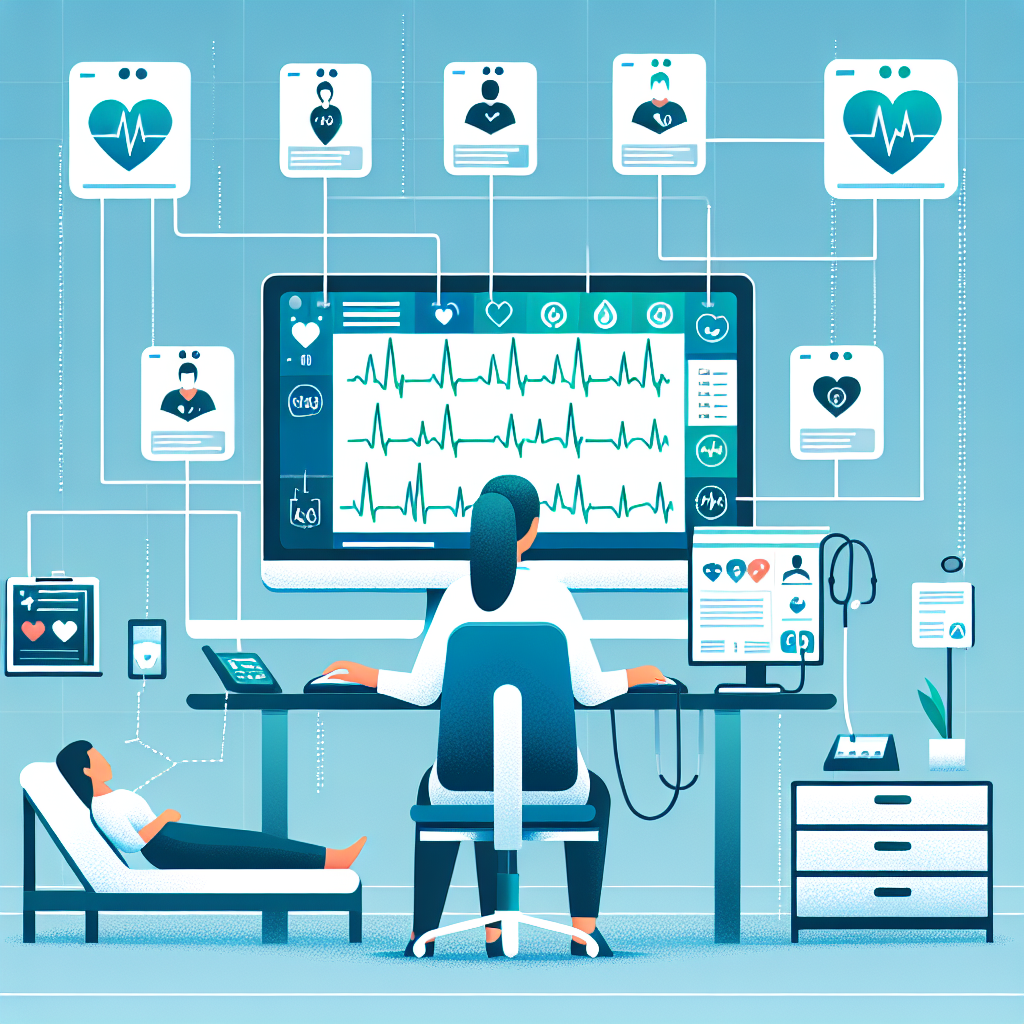
Improving Patient Outcomes with Remote Monitoring
In recent years, remote monitoring technology has emerged as a game-changer in the healthcare industry, particularly when it comes to improving patient outcomes. This innovative approach allows healthcare providers to track and monitor patients’ health status from a distance, providing real-time data and insights that can help in early detection of health issues, timely interventions, and personalized care.One of the key benefits of remote monitoring is its ability to empower patients to take control of their health and well-being. By enabling patients to track their vital signs, symptoms, and medication adherence at home, remote monitoring encourages self-management and promotes a proactive approach to healthcare. This not only improves patient engagement and satisfaction but also leads to better treatment adherence and outcomes.
Remote monitoring also plays a crucial role in preventing hospital readmissions and reducing healthcare costs. By monitoring patients remotely, healthcare providers can identify potential complications early on and intervene before they escalate, thus reducing the need for hospital visits and readmissions. This not only improves the overall quality of care but also helps in lowering healthcare costs and improving resource allocation.
Moreover, remote monitoring allows for more frequent and personalized care, as healthcare providers can monitor patients’ progress in real-time and make adjustments to their treatment plans accordingly. This leads to more effective and timely interventions, resulting in improved patient outcomes and overall health.
Additionally, remote monitoring technology enables healthcare providers to deliver care to patients in remote or underserved areas, where access to healthcare services may be limited. By leveraging telehealth and remote monitoring tools, healthcare providers can reach more patients and provide them with the care they need, regardless of their location.
Overall, remote monitoring has the potential to revolutionize the way healthcare is delivered and improve patient outcomes significantly. By empowering patients, preventing complications, reducing hospital readmissions, and enabling personalized care, remote monitoring technology is paving the way for a more efficient, effective, and patient-centered healthcare system. As technology continues to advance, the possibilities for remote monitoring in improving patient outcomes are limitless, and its impact on the healthcare industry is only expected to grow in the coming years.
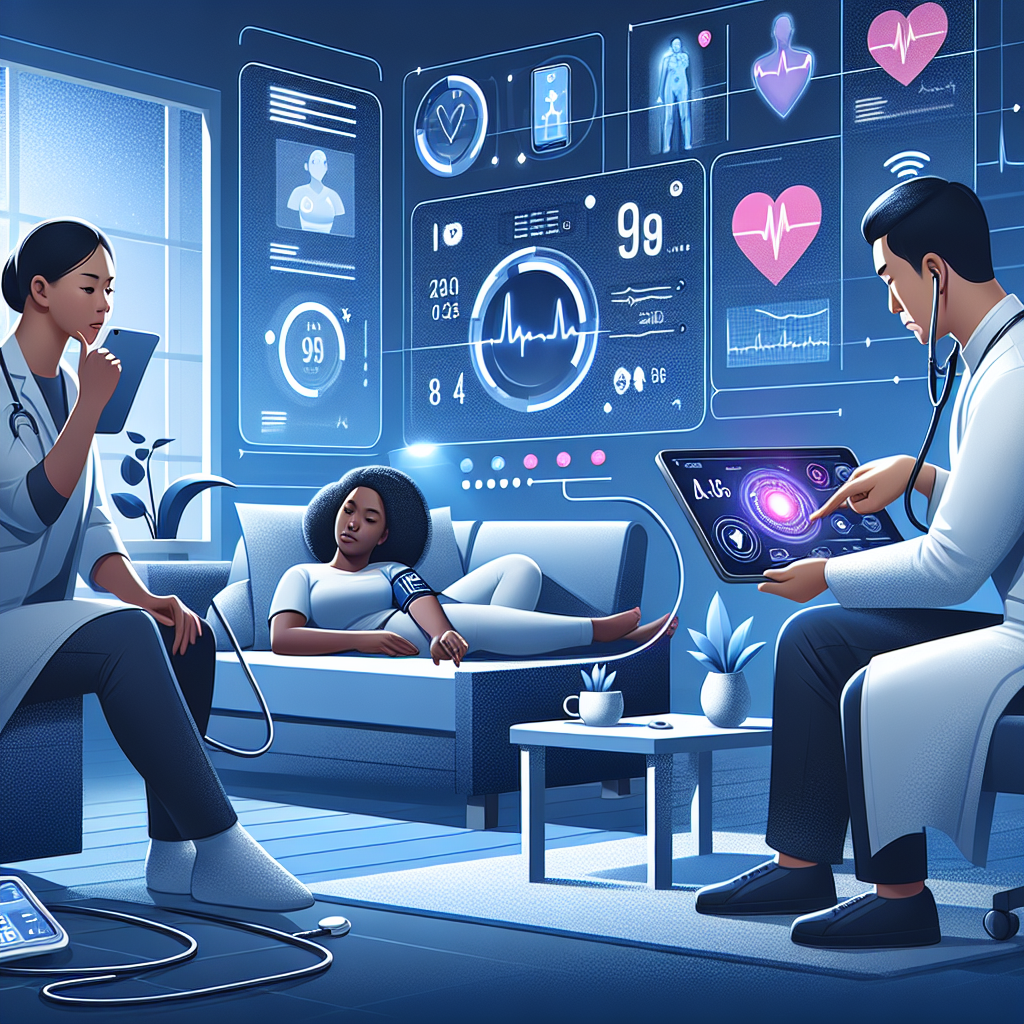
Remote Monitoring in Healthcare: Enhancing Patient Care and Outcomes
Remote monitoring in healthcare is revolutionizing the way patients receive care and improving outcomes. With the advancements in technology, healthcare providers can now monitor patients’ vital signs and health data from a distance, allowing for more personalized and efficient care.Remote monitoring allows patients to be monitored in the comfort of their own homes, reducing the need for frequent visits to healthcare facilities. This is especially beneficial for patients with chronic conditions who require regular monitoring and management of their health.
One of the key benefits of remote monitoring is the ability to detect health issues early on before they escalate into more serious problems. By continuously monitoring patients’ vital signs, healthcare providers can intervene promptly and provide necessary treatment, ultimately improving patient outcomes and reducing hospitalizations.
Remote monitoring also helps patients stay engaged and empowered in their own healthcare. With access to real-time health data, patients can take a more active role in managing their conditions and making informed decisions about their health. This leads to better adherence to treatment plans and overall improved health outcomes.
Additionally, remote monitoring can help healthcare providers optimize their resources and improve efficiency. By monitoring patients remotely, healthcare providers can prioritize care for those who need it most, reducing unnecessary visits and streamlining the delivery of care.
Overall, remote monitoring in healthcare is transforming the way patients receive care and leading to better outcomes. With the ability to monitor patients from a distance, healthcare providers can provide more personalized and efficient care, ultimately improving patient outcomes and reducing healthcare costs. As technology continues to advance, remote monitoring will play an increasingly important role in enhancing patient care and outcomes.
How Remote Monitoring is Improving Outcomes for Patients with Chronic Illnesses
Chronic illnesses can be a burden for patients, requiring ongoing management and monitoring to ensure they are receiving the proper care and treatment. However, thanks to advancements in technology, remote monitoring has become a valuable tool in improving outcomes for patients with chronic illnesses.Remote monitoring allows healthcare providers to track a patient’s vital signs, symptoms, and medication adherence from a distance. This real-time data enables healthcare teams to intervene quickly if a patient’s condition worsens, ultimately leading to better outcomes and reduced hospitalizations.
One of the key benefits of remote monitoring is the ability to provide personalized care to each patient. By continuously collecting and analyzing data, healthcare providers can tailor treatment plans to meet the individual needs of each patient. This personalized approach can lead to better control of chronic conditions, improved quality of life, and reduced healthcare costs.
Furthermore, remote monitoring can also help patients take a more active role in managing their health. By providing patients with access to their own health data, they can better understand their condition, track their progress, and make informed decisions about their care. This increased engagement can lead to better adherence to treatment plans and ultimately better health outcomes.
Another advantage of remote monitoring is its ability to provide continuous care, even outside of traditional healthcare settings. Patients can be monitored in their own homes, allowing for early detection of potential issues and timely intervention. This not only improves patient outcomes but also reduces the burden on healthcare facilities and providers.
Overall, remote monitoring is revolutionizing the way chronic illnesses are managed and treated. By providing personalized care, empowering patients, and enabling continuous monitoring, remote monitoring is improving outcomes for patients with chronic illnesses and helping them live healthier, more fulfilling lives.
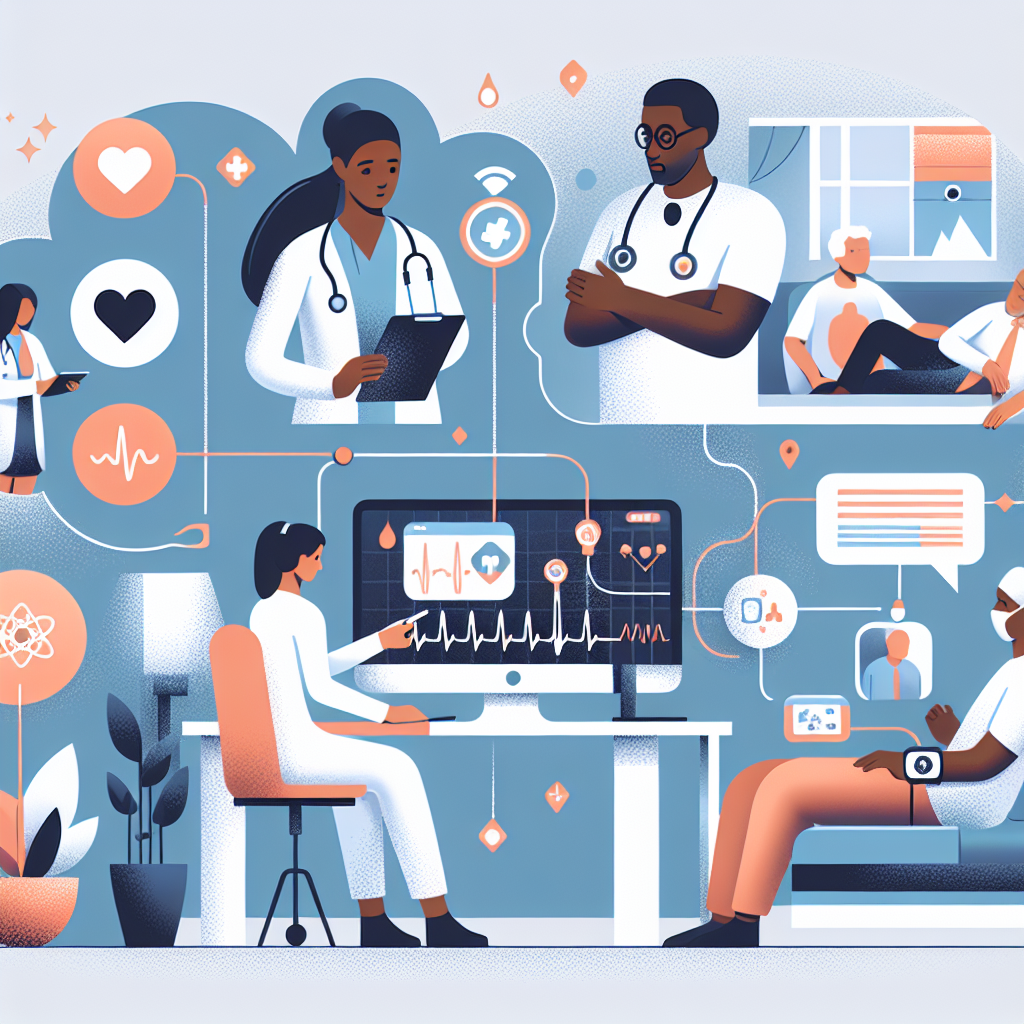
The Role of Remote Monitoring in Healthcare: Improving Patient Care and Outcomes
In recent years, remote monitoring technology has been revolutionizing healthcare by providing healthcare professionals with real-time data on their patients without the need for them to be physically present. This technology has the potential to greatly improve patient care and outcomes by allowing healthcare providers to monitor patients more closely and make timely interventions when necessary.Remote monitoring in healthcare involves the use of devices such as wearable sensors, mobile apps, and telemedicine platforms to track a patient’s vital signs, symptoms, and medication adherence from a distance. This allows healthcare providers to keep a closer eye on their patients, especially those with chronic conditions or those who have recently been discharged from the hospital.
One of the key benefits of remote monitoring is its ability to detect early warning signs of health problems before they escalate into more serious conditions. For example, a patient with heart failure can be monitored for changes in their weight, blood pressure, and heart rate, which are all indicators of a worsening condition. By catching these changes early, healthcare providers can intervene quickly and prevent the patient from being readmitted to the hospital.
Remote monitoring also allows for more personalized and proactive care for patients. By continuously tracking a patient’s health data, healthcare providers can tailor treatment plans to their specific needs and adjust medications or interventions as needed. This type of personalized care can lead to better outcomes for patients and reduce the risk of complications or adverse events.
Furthermore, remote monitoring can also improve access to care for patients who may have difficulty traveling to healthcare facilities. For those in rural areas or who are homebound, remote monitoring allows them to receive regular check-ins from their healthcare providers without having to leave the comfort of their homes. This can help to improve patient satisfaction and overall quality of care.
Overall, remote monitoring technology has the potential to greatly improve patient care and outcomes in healthcare. By providing healthcare providers with real-time data on their patients, they can intervene quickly when necessary and provide more personalized and proactive care. As this technology continues to advance, we can expect to see even greater improvements in patient outcomes and overall healthcare delivery.
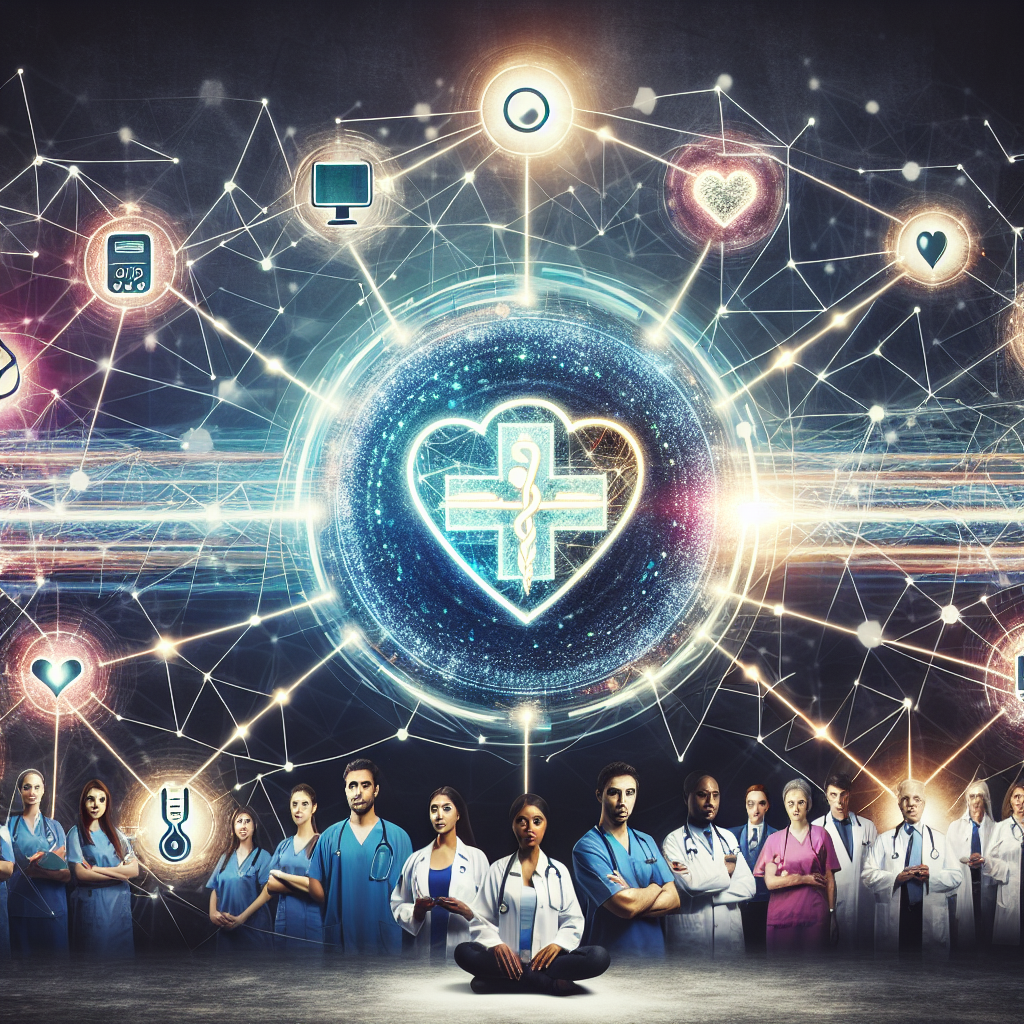
The Rise of Remote Monitoring in Healthcare: Improving Patient Outcomes and Streamlining Operations
The Rise of Remote Monitoring in Healthcare: Improving Patient Outcomes and Streamlining OperationsAdvancements in technology have revolutionized healthcare in recent years, and one of the most significant developments has been the rise of remote monitoring. This innovative approach to healthcare allows healthcare providers to keep track of patients’ health status and vital signs from a distance, providing real-time data and insights that can lead to better patient outcomes and more efficient operations.
Remote monitoring has become increasingly popular in recent years, especially in light of the COVID-19 pandemic, which has highlighted the importance of minimizing in-person interactions to reduce the spread of the virus. With remote monitoring, patients can receive the care they need without having to leave their homes, reducing the risk of exposure to infectious diseases.
One of the key benefits of remote monitoring is its ability to improve patient outcomes. By continuously monitoring patients’ vital signs and health status, healthcare providers can detect any changes or abnormalities early on, allowing for timely intervention and treatment. This proactive approach to healthcare can prevent complications and hospitalizations, leading to better overall health outcomes for patients.
Remote monitoring also helps to streamline operations for healthcare providers. By automatically collecting and analyzing patient data, healthcare providers can more efficiently manage patient care, prioritize high-risk patients, and allocate resources effectively. This not only improves the quality of care but also reduces costs and enhances operational efficiency.
Furthermore, remote monitoring can improve patient engagement and satisfaction. Patients can have greater control over their health by actively participating in their care and monitoring their own progress. This can lead to better adherence to treatment plans and improved health outcomes.
As remote monitoring continues to gain traction in the healthcare industry, it is essential for healthcare providers to invest in the necessary technology and infrastructure to support this innovative approach to care. This includes implementing secure and user-friendly remote monitoring platforms, training staff on how to use these tools effectively, and ensuring compliance with data privacy regulations.
In conclusion, the rise of remote monitoring in healthcare represents a significant step forward in improving patient outcomes and streamlining operations. By harnessing the power of technology to monitor patients remotely, healthcare providers can deliver more personalized and efficient care, ultimately leading to better health outcomes for patients. As the healthcare industry continues to evolve, remote monitoring will undoubtedly play a crucial role in shaping the future of healthcare delivery.
AI tool predicts health risks in aged care, improving resident outcomes
Listen to article An AI-powered tool developed by Telstra Health and RMIT University is transforming the way aged care facilities monitor and manage residents’ health by predicting risks such as falls, depression, and mortality.
With nearly half a million older Australians relying on aged care services as of June 30, 2023, the sector faces immense pressure to provide high-quality care.
In response, the collaboration between Telstra Health, RMIT University, and the Digital Health Cooperative Research Centre has resulted in an AI-driven tool designed to predict health risks and improve care outcomes in aged care settings.
Dr. Tabinda Sarwar, the project lead and data scientist from RMIT University, highlights the significance of the tool in alleviating the strain on nursing staff.
“The tool is capable of automatically monitoring both structured and free-text electronic patient records for 36 evidence-based indicators of deterioration,” Dr. Sarwar explains. “These indicators help predict various health risks, supporting nursing staff and improving resident care.”
Aged care nursing staff juggle numerous responsibilities, including daily caregiving and health monitoring.
Given the heavy workload, manual screening tools are not always practical. The new digital health tool is designed to reduce this burden by predicting adverse health events before they occur, making it a game-changer for aged care facilities.
The tool, which has won the 2024 Research Australia’s Digital & Data Health Innovation Award, analyzes daily operational data, including health-related notes and records.
Using advanced natural language processing (NLP) and machine learning techniques, the tool generates predictive alerts for potential health risks like falls, depression, and even mortality.
“By applying advanced data analysis to daily-collected information, we are able to predict signs of deterioration, giving care teams more time to respond,” Dr. Sarwar says. “This includes assessing risks such as falls, depression, and mortality based on data extracted from geriatric assessments, observation charts, and progress notes.”
The collaboration leveraged Telstra Health’s Clinical Manager system, which is already deployed in over 360 facilities across Australia, ensuring a broad reach.
The project also benefited from the expertise of nursing staff and the support of the Digital Health CRC, bridging the gap between academia and industry to create a highly effective solution.
Developing a universal tool that could address diverse challenges faced by nursing staff across different aged care facilities was a significant hurdle. “We had to design a solution that could have a meaningful impact on a larger population,” Dr. Sarwar explains.
To ensure the tool’s usability, the team conducted independent studies, using statistical and machine learning techniques to validate its performance and clinical feasibility.
The tool is currently being rolled out by Telstra Health, with several aged care homes already expressing interest in adopting it.
While its potential for expansion is significant, including applications in hospitals and other healthcare settings, the next steps depend on Telstra Health’s future strategies.
“This tool has the potential to extend to various healthcare settings and could play a key role in transforming the healthcare industry,” Dr. Sarwar concludes, emphasizing the wide-reaching impact of this AI-driven solution in improving healthcare outcomes for vulnerable populations.
AI tool predicts health risks in aged care, improving resident outcomesA groundbreaking AI tool is revolutionizing the way healthcare professionals in aged care facilities can predict and prevent health risks among residents. By analyzing vast amounts of data, including medical records, vital signs, and even social interactions, this AI tool can identify trends and patterns that may indicate potential health issues before they escalate.
This innovative technology allows caregivers to proactively address health concerns, leading to better resident outcomes and improved quality of life. By predicting health risks early on, healthcare providers can intervene sooner, provide targeted care, and prevent unnecessary hospitalizations or complications.
Additionally, the AI tool can help optimize care plans and personalized interventions for each resident, ultimately enhancing their overall well-being and longevity. With access to real-time insights and predictive analytics, aged care facilities can deliver more proactive and efficient care, ultimately improving resident satisfaction and outcomes.
Overall, the implementation of this AI tool in aged care facilities represents a significant step forward in leveraging technology to enhance the quality of care for older adults. By harnessing the power of artificial intelligence, healthcare professionals can better anticipate and address health risks, ultimately leading to improved resident outcomes and a higher standard of care.
Tags:
- AI tool in aged care
- Predictive health risks
- Improving resident outcomes
- Healthcare technology
- Artificial intelligence in senior care
- Elderly health predictions
- AI for improved aging outcomes
- Predictive analytics in aged care
- Health risk assessment tool
- Senior care technology advancements
#tool #predicts #health #risks #aged #care #improving #resident #outcomes
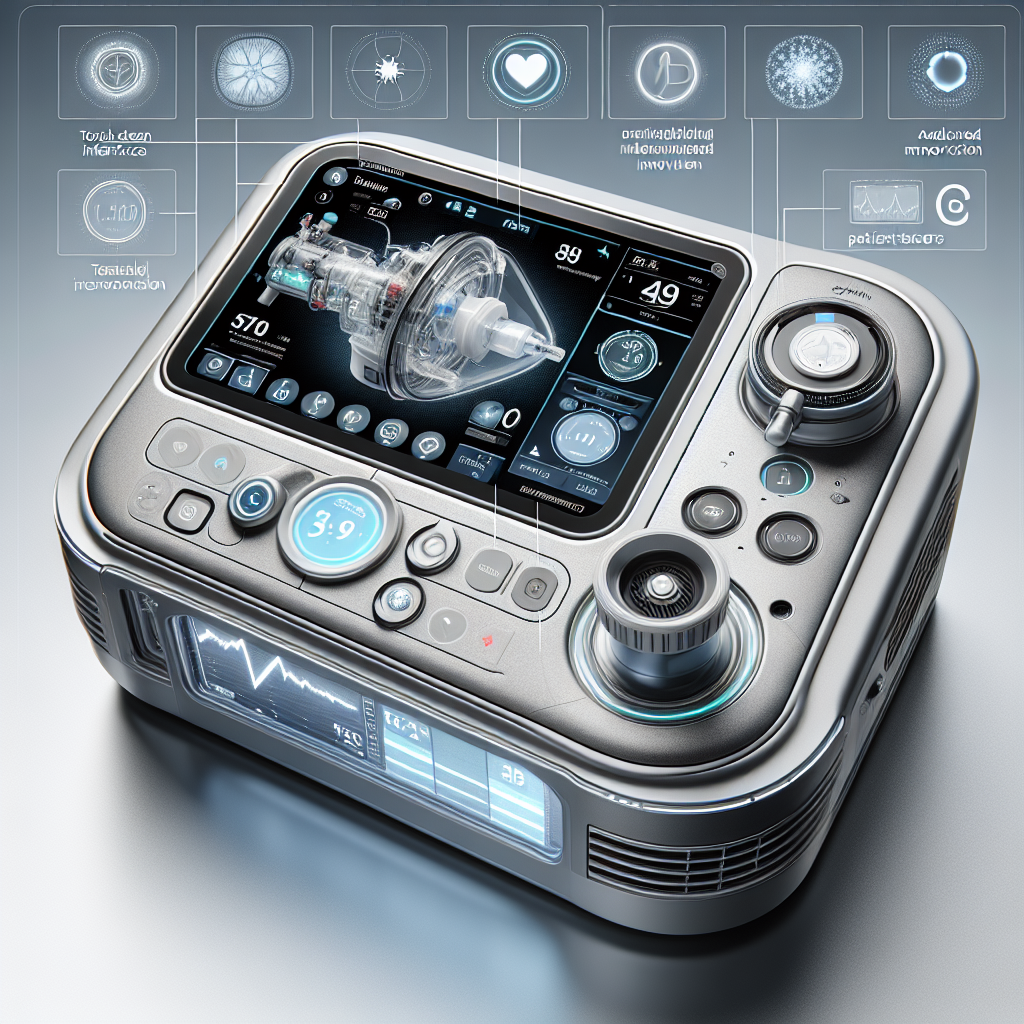
Innovative Features of the Bear 2 Ventilator for Improved Patient Outcomes
In the world of healthcare, ventilators play a crucial role in providing life-saving support to patients with respiratory issues. The Bear 2 Ventilator is a cutting-edge device that offers a range of innovative features designed to improve patient outcomes and enhance the quality of care provided by medical professionals.One of the standout features of the Bear 2 Ventilator is its advanced monitoring capabilities. The device is equipped with sensors that continuously monitor the patient’s respiratory status, allowing healthcare providers to quickly identify any changes in the patient’s condition and make timely adjustments to their treatment plan. This real-time monitoring helps to ensure that patients receive the appropriate level of support and can lead to improved outcomes.
In addition to its monitoring capabilities, the Bear 2 Ventilator also offers a range of customizable ventilation modes. This allows healthcare providers to tailor the device’s settings to meet the specific needs of each individual patient, ensuring that they receive the most effective treatment possible. Whether a patient requires high-flow oxygen therapy, pressure support ventilation, or any other mode of ventilation, the Bear 2 Ventilator can be easily adjusted to deliver the appropriate level of support.
Another key feature of the Bear 2 Ventilator is its user-friendly interface. The device is designed to be easy to operate, with intuitive controls and a clear display that allows healthcare providers to quickly access and adjust the settings as needed. This simplicity makes it easier for medical professionals to provide high-quality care to their patients, even in high-pressure situations.
Furthermore, the Bear 2 Ventilator is also designed with patient comfort in mind. The device features a quiet operation and a lightweight design, making it less intrusive for patients and allowing them to rest more comfortably while receiving treatment. This focus on patient comfort can help to reduce anxiety and improve the overall experience of receiving ventilation therapy.
Overall, the Bear 2 Ventilator is an innovative device that offers a range of features designed to improve patient outcomes and enhance the quality of care provided by healthcare professionals. With its advanced monitoring capabilities, customizable ventilation modes, user-friendly interface, and focus on patient comfort, the Bear 2 Ventilator is a valuable tool for supporting patients with respiratory issues and helping them to achieve the best possible outcomes.
#Innovative #Features #Bear #Ventilator #Improved #Patient #Outcomes,bear 2 ventilator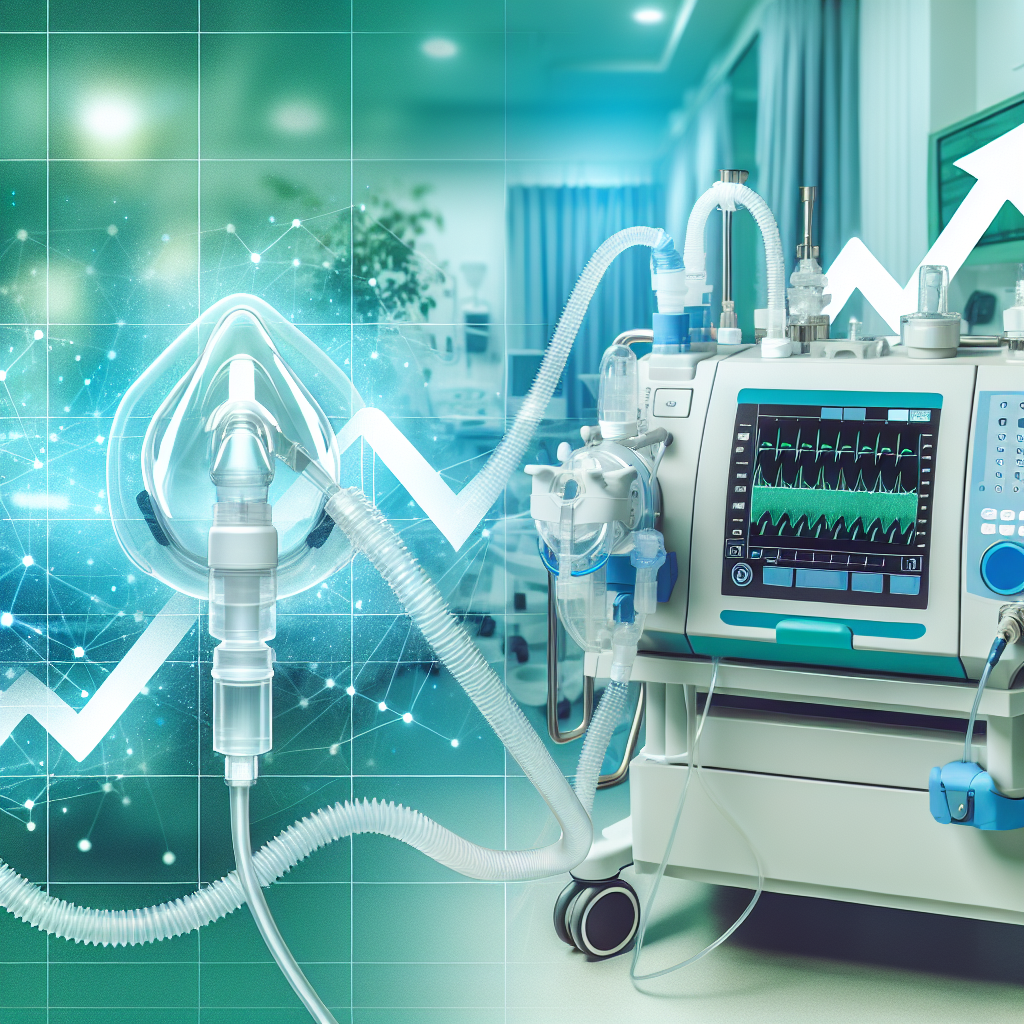
Improving Patient Outcomes with the Bear 2 Ventilator: A Case Study
In the world of healthcare, patient outcomes are the ultimate measure of success. Healthcare providers strive to improve patient outcomes through various means, including the use of advanced medical technology. One such technology that has shown great promise in improving patient outcomes is the Bear 2 Ventilator.The Bear 2 Ventilator is a state-of-the-art mechanical ventilator that provides respiratory support to patients who are unable to breathe on their own. It delivers precise levels of oxygen and air pressure to the patient’s lungs, helping them to maintain adequate oxygen levels and breathe more easily. The Bear 2 Ventilator is equipped with advanced features such as pressure support ventilation, volume control ventilation, and adaptive flow technology, making it an ideal choice for patients with a wide range of respiratory conditions.
To illustrate the impact of the Bear 2 Ventilator on patient outcomes, let’s consider a case study of a patient with severe acute respiratory distress syndrome (ARDS). ARDS is a life-threatening condition that occurs when the lungs become severely inflamed and filled with fluid, making it difficult for the patient to breathe. Patients with ARDS often require mechanical ventilation to support their breathing and improve oxygenation.
In this case study, a 55-year-old male patient was admitted to the intensive care unit with severe ARDS. He was struggling to breathe, and his oxygen levels were dangerously low. The healthcare team decided to initiate mechanical ventilation using the Bear 2 Ventilator to support the patient’s respiratory function.
The Bear 2 Ventilator delivered precise levels of oxygen and air pressure to the patient’s lungs, helping to improve his oxygenation and reduce the work of breathing. The pressure support ventilation feature of the Bear 2 Ventilator allowed the patient to breathe more comfortably and efficiently, reducing the risk of ventilator-associated complications such as ventilator-induced lung injury.
Over the course of several days, the patient’s condition gradually improved with the support of the Bear 2 Ventilator. His oxygen levels stabilized, and his lung function began to recover. With the help of the Bear 2 Ventilator, the patient was able to avoid the need for invasive ventilation techniques such as extracorporeal membrane oxygenation (ECMO) and ultimately, was successfully weaned off the ventilator and discharged from the hospital.
This case study highlights the significant impact that the Bear 2 Ventilator can have on patient outcomes, particularly in critically ill patients with respiratory failure. By providing advanced respiratory support and improving oxygenation, the Bear 2 Ventilator can help patients with ARDS and other respiratory conditions recover more quickly and with fewer complications.
In conclusion, the Bear 2 Ventilator is a valuable tool in the arsenal of healthcare providers seeking to improve patient outcomes in critical care settings. Its advanced features and precise delivery of respiratory support make it an essential component of the care of patients with respiratory failure. By investing in innovative technologies like the Bear 2 Ventilator, healthcare providers can enhance the quality of care they provide and ultimately, improve patient outcomes.
#Improving #Patient #Outcomes #Bear #Ventilator #Case #Study,bear 2 ventilator
Mobile Health: How Technology is Improving Healthcare Access and Outcomes
Mobile health, also known as mHealth, is revolutionizing the way healthcare is delivered and accessed. With the rise of smartphones and other mobile devices, healthcare providers and patients alike are finding new ways to improve outcomes and increase access to care.One of the key benefits of mobile health is the ability to provide healthcare services to patients who may not have easy access to traditional healthcare facilities. This is particularly important in rural areas or developing countries where there may be a shortage of healthcare providers. Mobile health apps and telemedicine platforms allow patients to consult with healthcare professionals remotely, saving time and money on travel and reducing the burden on already overwhelmed healthcare systems.
Another way that technology is improving healthcare outcomes is through the use of wearable devices and health tracking apps. These devices can monitor a wide range of health metrics, from heart rate and blood pressure to activity levels and sleep patterns. By tracking these metrics over time, both patients and healthcare providers can gain valuable insights into a patient’s health and make informed decisions about treatment and lifestyle changes.
Mobile health technology is also helping to improve healthcare outcomes through increased patient engagement and empowerment. Many mobile health apps allow patients to track their own health data, set health goals, and receive personalized feedback and recommendations. This can help patients take a more active role in managing their own health and make positive changes to their lifestyle.
In addition to improving access to care and outcomes, mobile health technology is also helping to reduce healthcare costs. By providing remote consultations and monitoring, mobile health can help to prevent unnecessary hospital visits and emergency room visits. This can lead to significant cost savings for both patients and healthcare providers.
Overall, mobile health technology is playing a crucial role in improving healthcare access and outcomes. By leveraging the power of smartphones and other mobile devices, healthcare providers and patients are finding new ways to connect, communicate, and collaborate on improving health and wellness. As technology continues to advance, the possibilities for mobile health are endless, and the future of healthcare looks brighter than ever.
#Mobile #Health #Technology #Improving #Healthcare #Access #Outcomes,mobile
Impacts of Teacher Evaluation and Professional Development on Student Outcomes (

Impacts of Teacher Evaluation and Professional Development on Student Outcomes (
Price :86.53– 68.54
Ends on : N/A
View on eBay
Teacher evaluation and professional development are crucial components of improving student outcomes in education. When teachers are evaluated regularly and provided with opportunities for growth and development, they are better equipped to meet the diverse needs of their students and create a positive learning environment.One of the key impacts of teacher evaluation and professional development on student outcomes is improved teaching practices. By receiving constructive feedback on their performance, teachers can identify areas for improvement and make necessary adjustments to their instructional strategies. This, in turn, leads to more effective teaching and increased student engagement and achievement.
Furthermore, professional development opportunities help teachers stay current with the latest research and best practices in education. When teachers are continuously learning and growing in their profession, they are better able to adapt to the changing needs of their students and provide high-quality instruction that meets the standards of excellence.
Teacher evaluation also plays a role in holding educators accountable for their performance and ensuring that they are meeting the needs of all students. By evaluating teachers on a regular basis, schools can identify areas of weakness and provide targeted support and resources to help teachers improve their practice.
In conclusion, teacher evaluation and professional development have a significant impact on student outcomes. By supporting teachers in their continuous growth and development, schools can create a more effective and engaging learning environment that ultimately benefits all students.
#Impacts #Teacher #Evaluation #Professional #Development #Student #Outcomes,students and
professionals
